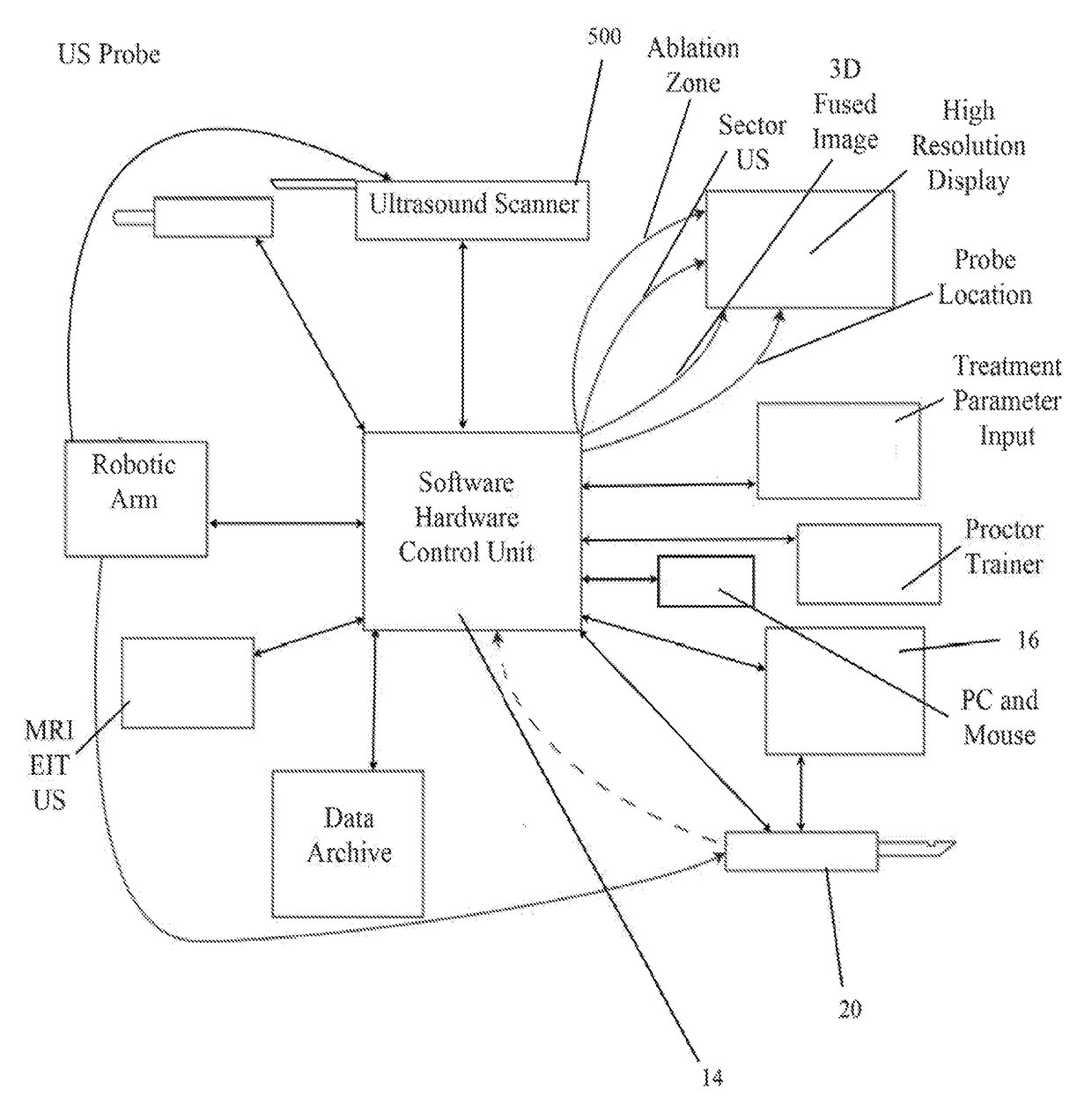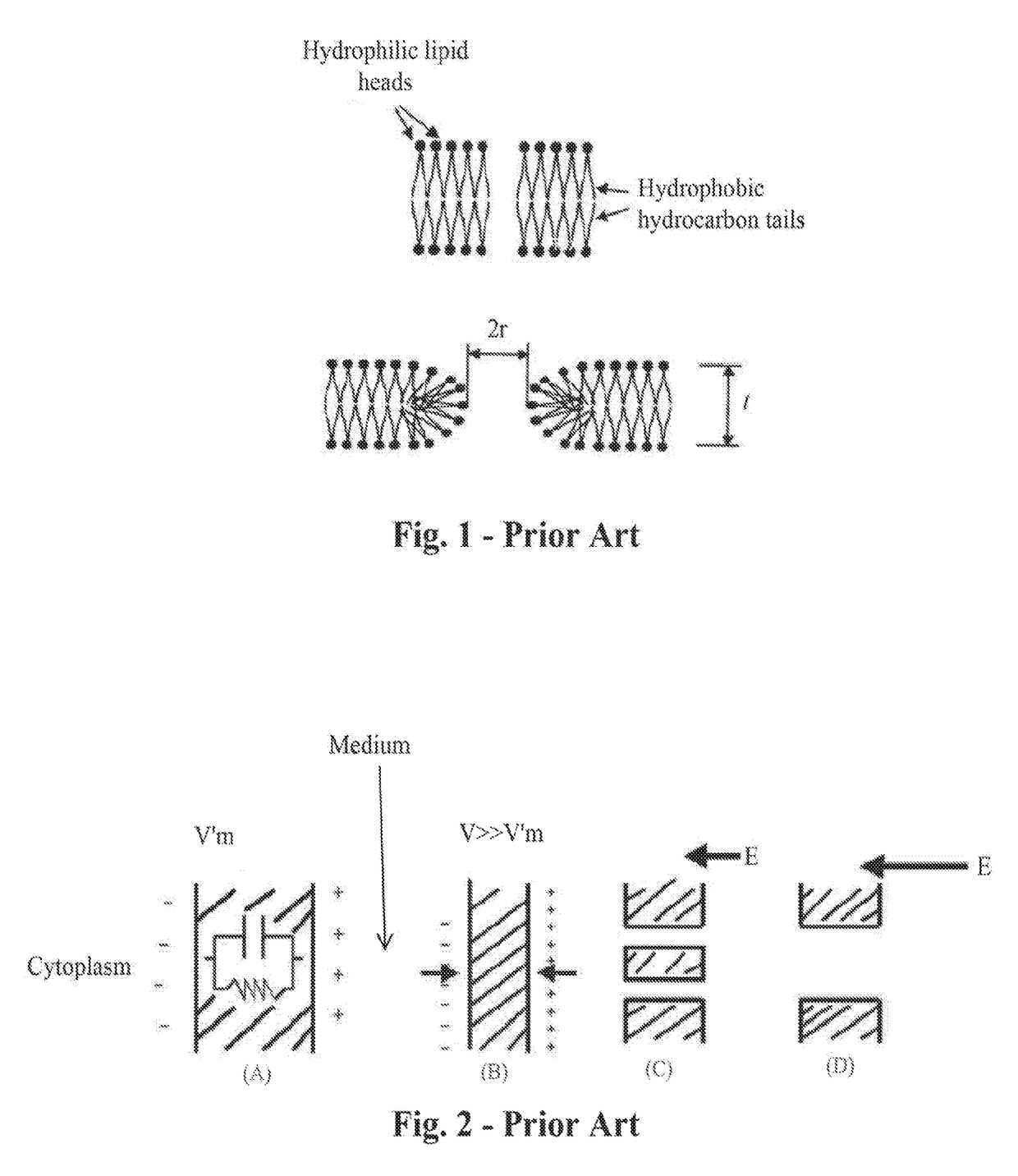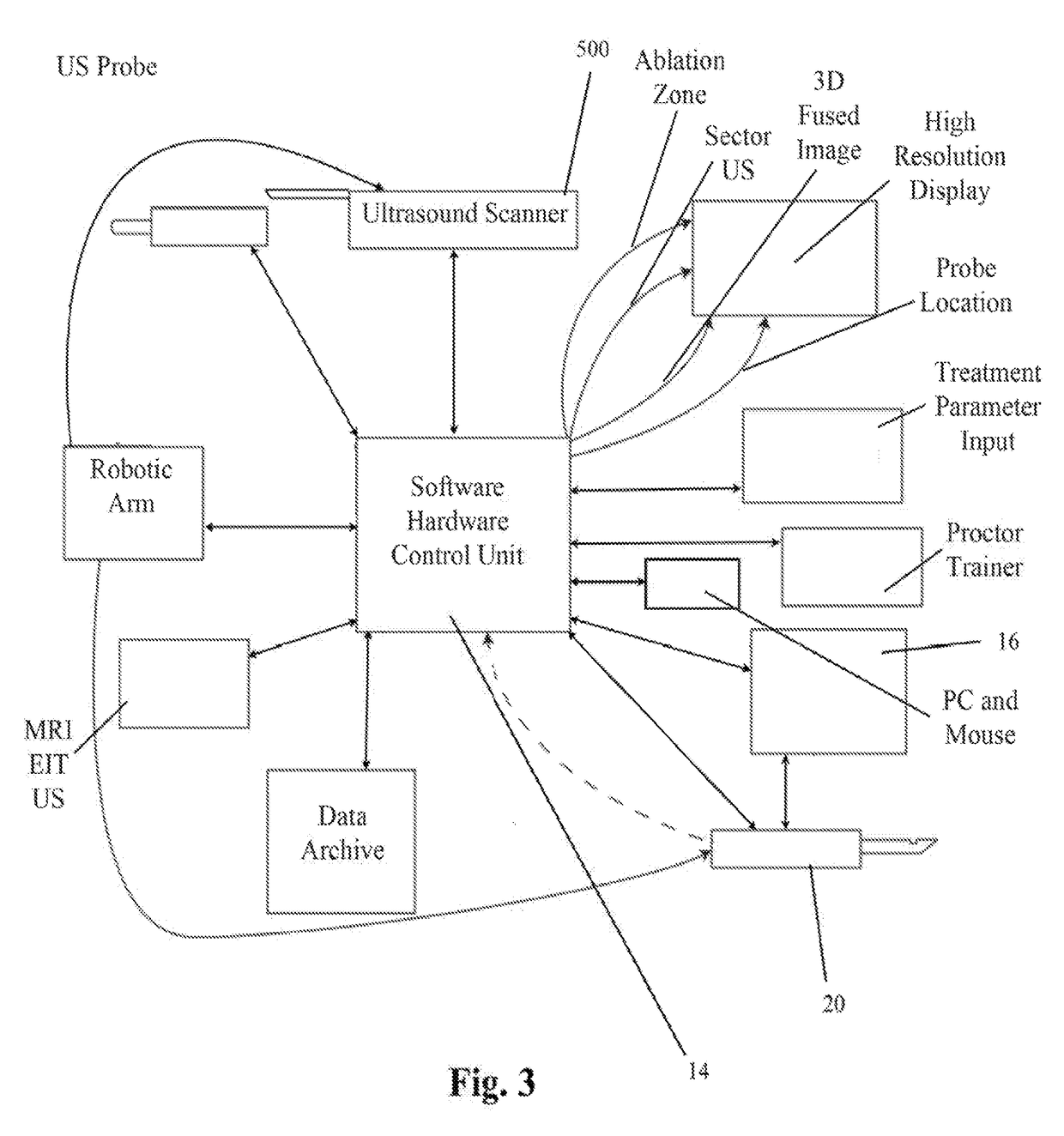Radio-frequency electrical membrane breakdown for the treatment of benign prostatic hyperplasia
a radiofrequency electrical membrane and benign prostatic hyperplasia technology, applied in the field of medical devices and treatment methods, can solve the problems of collateral injury, little or no ability to spare normal structures, based and cryoablation techniques, etc., and achieve the effect of safe and effective treatmen
- Summary
- Abstract
- Description
- Claims
- Application Information
AI Technical Summary
Benefits of technology
Problems solved by technology
Method used
Image
Examples
Embodiment Construction
[0066]In general, the software-hardware controller unit (SHCU) operating the proprietary office based BPH treatment system software according to the present invention facilitates the treatment of BPH by directing the placement of EMB treatment probe(s) 20, and, optionally, anesthesia needle(s) 300, and by delivering electric pulses designed to cause EMB within the unwanted BPH tissue to EMB treatment probe(s) 20, all while the entire process may be monitored in real time via one or more two- or three-dimensional imaging devices scans taken at strategic locations to measure the extent of BPH tissue cell death. The system is such that the treatment may be performed by a physician under the guidance of the software, or may be performed completely automatically, from the process of imaging the treatment area 2 to the process of placing one or more probes using robotic arms operatively connected to the SHCU to the process of delivering electric pulses and monitoring the results of same. ...
PUM
 Login to View More
Login to View More Abstract
Description
Claims
Application Information
 Login to View More
Login to View More - R&D
- Intellectual Property
- Life Sciences
- Materials
- Tech Scout
- Unparalleled Data Quality
- Higher Quality Content
- 60% Fewer Hallucinations
Browse by: Latest US Patents, China's latest patents, Technical Efficacy Thesaurus, Application Domain, Technology Topic, Popular Technical Reports.
© 2025 PatSnap. All rights reserved.Legal|Privacy policy|Modern Slavery Act Transparency Statement|Sitemap|About US| Contact US: help@patsnap.com



